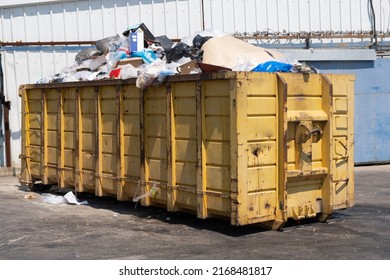When it pertains to dumpster rentals, there are a number of essential tips to keep in mind for effective waste monitoring. Initially, choose the best dumpster dimension to stay clear of overfilling or squandering resources. Understand the rental costs, consisting of base fees, additional charges, and prospective discount rates. Know what can and can not enter a dumpster, including dangerous products, recyclables, and restricted things. Prepare for ideal dumpster placement, guaranteeing accessibility and marginal blockage. Finally, timetable logistics thoroughly to lessen disturbances to your project process. By adhering to these guidelines, you'll be well on your means to a successful project - and there's even more to explore to guarantee a smooth experience.
Choosing the Right Dumpster Size
When it involves dumpster rentals, picking the right dumpster size is necessary to ensure efficient waste management and cost-effectiveness. A dumpster that is as well small can lead to overfilling, causing additional rental fees and prospective penalties.
On the various other hand, a dumpster that is as well big can be a waste of resources and boost rental costs unnecessarily. To identify you pick the best dimension, think about the kind and quantity of waste you require to get rid of of.
For small projects, such as cleaning out a solitary room, a 10-15 backyard dumpster might suffice. For larger tasks, like construction or renovation, a 20-30 lawn dumpster might be required.
Additionally, consider the area offered for dumpster positioning and any kind of local regulations concerning dumpster dimension and placement. By picking the right dumpster dimension, you can establish a smooth and cost-effective waste management process.
Understanding Dumpster Rental Costs
Having picked the best dumpster size, the next step is to understand the costs connected with dumpster leasings. The rental period, dumpster size, and location are crucial aspects that influence the overall cost
Typically, dumpster rental business bill a base cost that includes a certain rental period, typically ranging from a couple of days to a week or even more. Additional fees may apply for prolonged service periods, obese dumpsters, or unique demands like same-day delivery.
It's vital to ask about any extra costs or additional charges before completing your rental agreement. Make certain to inquire about the weight capacity and any type of restrictions on the kinds of materials that can be thrown away in the dumpster.
Understanding these information will certainly help you budget plan precisely and stay clear of surprise costs Some dumpster rental companies might also offer discounts for long-term services, bulk orders, or commitment programs, so it deserves checking out these https://rentry.co/2cy4qo7d alternatives as well.
What Can Go in a Dumpster
The dumpster's contents can considerably impact the rental experience, and understanding what can and can not enter a dumpster is vital for a successful project.
Generally, dumpsters are made to hold non-hazardous materials such as home trash, construction debris, and backyard waste. This can consist of products like damaged home appliances, furniture, drywall, roof covering products, and organic matter like fallen leaves and branches.

Additionally, dumpsters can suit heavy materials like concrete, asphalt, and dust, making them excellent for renovation and landscaping projects It's likewise typical to deal with recyclable products like cardboard, paper, and plastic in dumpsters.
However, it's important to get in touch with the rental business beforehand to verify they approve these products and to understand any kind of specific guidelines or restrictions
Prohibited Items and Materials
Embedded in the guidelines and policies of dumpster rentals are stringent standards governing what can not be thrown away in these containers. Comprehending what things are prohibited from being taken care of in a dumpster is necessary to staying clear of added costs, penalties, and even termination of services.
Hazardous waste, including batteries, electronics, and chemicals, position environmental and wellness risks if not taken care of properly.
Liquids, including paint, oil, and cleansing materials, can infect dirt and groundwater if not dealt with correctly.
Flammable materials, such as lp tanks, fireworks, and hot ashes, can trigger fires and explosions.
Toxic products, consisting of asbestos, lead, and medical waste, need special handling and disposal to stop damage to people and the environment.
Effective Dumpster Placement Strategies
Most dumpster rental projects require cautious preparation, and a vital facet of this preparation is figuring out the ideal placement of the dumpster on duty site.
The area of the dumpster can notably affect the efficiency and safety of the job. It is necessary to take into consideration the accessibility of the dumpster, ensuring it is quickly available for loading and discharging particles. In addition, the dumpster needs to be positioned in such a way that minimizes blockage of pedestrian and vehicular traffic.
When choosing an area, think of the distance to the workspace, considering the range and route that employees will need to take to dispose of waste.
It is additionally important to validate the dumpster is put on a degree, firm surface area to stop it from tipping or moving during usage. In addition, think about any kind of local regulations or homeowners' association rules that may impact dumpster placement.
Scheduling and Logistics Essentials
Five essential factors should be considered when scheduling and collaborating logistics for dumpster rental projects.
From guaranteeing prompt shipment to helping with effective waste removal, a tactical timetable is vital to the success of your project.
When preparation your logistics, be sure to take into account the following necessary factors:
Project Timeline: Straighten your dumpster rental period with your task timetable to assure you have the needed devices when you need it.
Delivery and Pickup: Coordinate with your rental service provider to schedule convenient distribution and pickup times that decrease disturbances to your workflow.
Space and Accessibility: Verify the dumpster can be safely and conveniently placed on your website, with appropriate area for filling and unloading.
Local Regulations: Familiarize yourself with local statutes and permits required for dumpster placement and waste disposal, preventing potential fines or penalties.